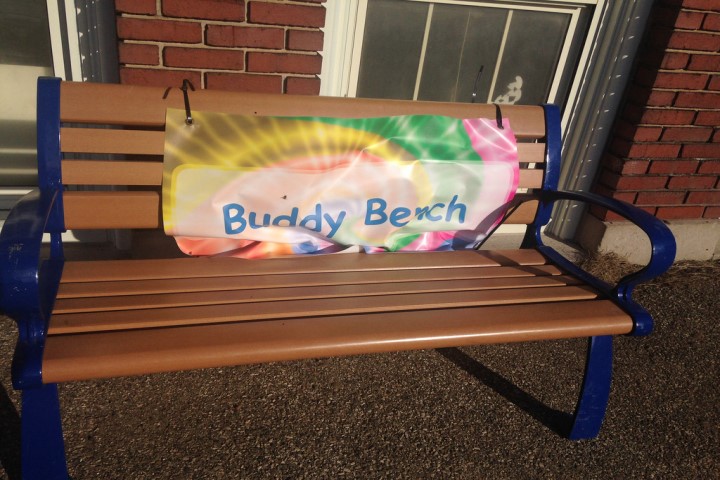The buddy bench at Jackson-Via Elementary School in Charlottesville, Virginia is catching on.


The buddy bench at Jackson-Via Elementary School in Charlottesville, Virginia is catching on.
School counselor Kristin Ullrich helped to bring the bench to one of the school’s playgrounds several years ago to provide a way for students to practice empathy, and it seems to be working, the Daily Progress reports.
“If the students are at recess and they’re sad and they feel like they need a friend, they can sit on the bench and the other students will go and include them,” Ullrich said. “It really allows them to learn practiced empathy and make new friends.”
The news site points to research from the International Electronic Journal of Elementary Education that shows buddy benches can help promote positive behaviors at school, particularly for students who struggle with their emotions and behaviors.
“The goal of the buddy bench is to change school climate by structuring part of recess to cue students to interact with and befriend students who might otherwise spend recess alone,” according to the Journal.
Jackson-Via third-grader Charlotte Dontanville said she used the bench to gain friends in kindergarten and now has many, as well as a motivation to reach out to others.
“If two people are being mean to each other, then nothing good will happen to either of them,” she said. “You want to make new friends, see what other people’s personalities are like – it’s good for you.”
The buddy bench at Jackson-Via is bright red, decorated with smiling faces, a rabbit and a beaming sun, designed to draw attention. But it’s not the only way the school is empowering students to step up to help their classmates.
The Bully Nots program designates “kindness leaders” who are tasked with teaching and demonstrating positive behaviors to younger students, through an assembly, songs and choreography.
One of this year’s leaders, Eva Reed, said she’s excited to join the Bully Nots, which combines her passions around an important message.
“I want to express myself and be kind to others and make a lot of new friends,” she said.
Both the buddy bench and the Bully Nots stem from the school’s intentional focus on the true meaning of kindness.
James Davison Hunter, founder of the Institute for Advanced Studies in Culture, wrote in his book “The Tragedy of Moral Education in America”:
It is easy to affirm a general idea of kindness, but quite another to believe that people are intrinsically worth being treated kindly, and that because of that belief, one has an obligation to actually treat them kindly.
Action for Happiness, “a movement of people committed to building a happier and more caring society,” offers suggestions to help educators create Kindness Projects in the classroom.
“Every Kindness Project starts with doing: using creative activities to explore, promote and experience caring and compassionate behavior,” according to ActionforHappiness.org. “It’s important that children learn by doing, not just by talking or thinking about kindness. This helps their ideas become real and tangible; and with repetition, it helps them to start forming new habits.”
For further reading on CultureFeed